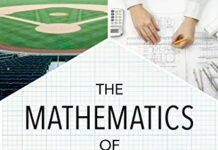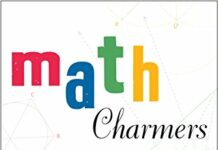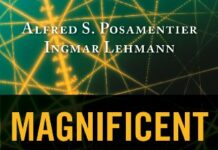
Ebook Info
- Published: 1996
- Number of pages: 288 pages
- Format: PDF
- File Size: 7.86 MB
- Authors: Alfred S. Posamentier
Description
Designed for high-school students and teachers with an interest in mathematical problem-solving, this stimulating collection includes more than 300 problems that are “off the beaten path” — i.e., problems that give a new twist to familiar topics that introduce unfamiliar topics. With few exceptions, their solution requires little more than some knowledge of elementary algebra, though a dash of ingenuity may help. Readers will find here thought-provoking posers involving equations and inequalities, diophantine equations, number theory, quadratic equations, logarithms, combinations and probability, and much more. The problems range from fairly easy to difficult, and many have extensions or variations the author calls “challenges.” By studying these nonroutine problems, students will not only stimulate and develop problem-solving skills, they will acquire valuable underpinnings for more advanced work in mathematics.
User’s Reviews
Editorial Reviews: About the Author Al Posamentier is currently Dean of the School of Education and Professor of Mathematics Education at Mercy College, New York. He is Professor Emeritus of Mathematics Education at The City College of the City University of New York, and former Dean of the School of Education, where he was for 40 years. He is the author and co-author of more than 55 mathematics books for teachers, secondary and elementary school students, and the general readership. Dr. Posamentier is also a frequent commentator in newspapers and journals on topics relating to education. Alfred S. Posamentier: Math’s Champion Dr. Alfred S. Posamentier, Professor Emeritus of Mathematics Education at New York’s City College and, from 1999 to 2009, the Dean of City College’s School of Education, has long been a tireless advocate for the importance of mathematics in education. He is the author or co-author of more than 40 mathematics books for teachers, students, and general readers including The Fascinating Fibonacci Numbers (Prometheus, 2007) and Mathematical Amazements and Surprises: Fascinating Figures and Noteworthy Numbers (Prometheus, 2009). His incisive views on aspects of mathematics education may often be encountered in the Letters columns and on the op-ed pages of The New York Times and other newspapers and periodicals. For Dover he provided, with co-author Charles T. Salkind, something very educational and also fun, two long-lived books of problems: Challenging Problems in Geometry and Challenging Problems in Algebra, both on the Dover list since 1996. Why solve problems? Here’s an excerpt from a letter Dr. Posamentier sent to The New York Times following an article about Martin Gardner’s career in 2009: “Teachers shouldn’t think that textbook exercises provide problem-solving experiences — that’s just drill. Genuine problem solving is what Mr. Gardner has been espousing. Genuine problem solving provides a stronger command of mathematics and exhibits its power and beauty. Something sorely lacking in our society.”
Reviews from Amazon users which were colected at the time this book was published on the website:
⭐This text contains non-routine algebra problems, their answers, some of their solutions, and a set of appendices covering results that are useful in solving the problems. By non-routine, I mean that the problems require insight and, in some cases, ingenuity to solve. The authors presume that you have acquired strong algebra skills and ask you to use those skills to solve unfamiliar problems. The level of difficulty of the problems is similar to those in the American Mathematics Competition (AMC), which is not surprising since Charles T. Salkind was the editor of the American High School Mathematics Examination (AHSME), now the AMC, from its inception in 1950 until his death in 1968. Unlike the problems in those competitions, these are not multiple-choice questions. While many of the problems in this text are similar to mathematics competition problems in which a numerical answer or an algebraic expression is sought, others require you to write a proof or investigate an algebraic relationship. Working through these stimulating problems and reading the solutions that the authors provide will expand your algebra skills and extend your knowledge of the subject.The problems draw upon topics covered in elementary, intermediate, and advanced algebra courses. They are grouped, somewhat loosely, by topic. The topics include equations and inequalities; systems of linear equations; arithmetic, geometric, and harmonic means; relations and functions; maxima and minima; the relationship between algebra and geometry; sequences and series; logarithms; combinatorics and probability; non-decimal bases; number theory; and Diophantine equations. While rational expressions crop up occasionally, they are not explored in any depth. Some of the problems include extensions or variations labeled “Challenges.” Despite the name, the Challenges are not usually more difficult than the problem with which they are associated. Some problems explore topics of interest in higher mathematics. A knowledge of calculus enables you to find simpler solutions to some of the problems than those provided by the authors in the solution key, but it is not strictly necessary.The problems are generally well-posed. However, it was not always clear from context when the authors meant integer or natural number (positive integer) when they used the word integer. When I found a problem unclear (which was not often), it was usually attributable to an implicit assumption. However, there was one problem in which the authors used the phrase “divided by” rather than “divided into,” making the problem impossible to solve.Answers are provided to the problems for which a numerical solution or algebraic expression is sought in a section at the back of the book. This gives you an opportunity to check your work before reading the solutions the authors provide. Most, but not all, of the answers are correct. In some cases, there is a discrepancy between the answer provided in the answer key and that provided in the solution key. In all but two such cases, which were easy to discover in the context of the solution, the answer in the solution key was correct.You can learn a lot by reading the solutions the authors provide, even if you have solved the problem correctly. In many cases, the authors not only provide a solution to the problem, they also show you how to solve an entire class of problems related to the problem you solved or attempted to solve. In some cases, the techniques they use to solve a problem can be applied to subsequent problems in the text. Solutions are provided for all the principal problems. However, solutions are provided for only some of the problems labeled Challenges.The appendices cover terminating digits; the remainder and factor theorems; maximum product, minimum sum problems; arithmetic, geometric, and harmonic means; divisibility tests; the binomial theorem; some useful algebraic relationships; and how to write a proof by mathematical induction. Since the relationships and techniques examined in the appendices are used in solving the problems and are not necessarily covered in the high school curriculum, it is useful to read the appendices before beginning to solve the problems. Proofs are given for some of the results in the appendices, although not the Binomial Theorem. However, the motivation and strategies for the proofs are not discussed. While the strategies become clear if you understand the proof, the motivations for those strategies do not.If you enjoy the challenge of working through this text, you may also wish to explore its companion volume,
⭐. Both texts were completed by Alfred S. Postamentier, who had collaborated with Salkind on them, after Salkind died.Working through this book is a great way to enhance your problem-solving skills. In that sense, it is useful preparation for mathematics contexts. However, a better resource for that purpose would be the books in the Contest Problem Book Series.
⭐prepares you for the AMC 10 examination;
⭐prepares you for the AMC 12 examination. Older books in the series, including those edited by Salkind, were written when the competitions had a different format and somewhat different contents. They are still useful as a means to develop your problem-solving skills, particularly
⭐, which is the only volume in the series that contains problems from the American Invitational Mathematics Examination (AIME). The books in that series are better edited than this text.
⭐Since I am studying for an important exam, I had been looking for a math book to practice. The problem was I needed problems “out of the routine”, not the common procedures and steps to solve a problem. A friend recommended this book to me, so I bought it.It has what I was looking for. Problems that you can not find in regular books, and you do not need to have a Master on mathematics to solve them. The solutions are very good and clear, and they dont tell you absolutely everything, you still have to think through the answers. Just and issue I found was that sometimes the problems are not completely clear, but not a big problem.I recommend it if you want to practice your mathematics skills or preparing for a test with unusual problems like me.
⭐This text has some great algebra problems. They are simple, but test your ability to think about algebra. Definitely recommended.
⭐I did not enjoy these problems, but I can see where some people would enjoy them very much. For the money, you can’t beat it.
⭐This challenged my mathematical understanding! Some of the items will foster some great class discussions! I can’t wait to use it!
⭐If you are looking for computer science help then skip this
⭐good
⭐Very enjoyable and challenging……problems range from easy to perplexing…….excellent explanations……one of the best books of this type I have ever found
⭐To figure out new ways of thinking
Keywords
Free Download Challenging Problems in Algebra (Dover Books on Mathematics) in PDF format
Challenging Problems in Algebra (Dover Books on Mathematics) PDF Free Download
Download Challenging Problems in Algebra (Dover Books on Mathematics) 1996 PDF Free
Challenging Problems in Algebra (Dover Books on Mathematics) 1996 PDF Free Download
Download Challenging Problems in Algebra (Dover Books on Mathematics) PDF
Free Download Ebook Challenging Problems in Algebra (Dover Books on Mathematics)




